Introduction
Firms in the production and services sectors are required to be effective in offering high quality products and services. However, it is challenging for organisations to provide and maintain high quality products and services for a long duration without incorporating the concept of quality control (Dahlgaard, Kristensen, & Kanji, 2005, p.43). Quality control entails the various techniques which are incorporated in an organisation’s operation in an effort to ensure that an organisation’s products and services conform to the required standards of quality. Quality has a significant influence on diverse aspects of an organisation such productivity and cost.
Organisations can either incorporate quality control before, during or after the various organisational processes (Kanji, 2002, p. 42). With this regard, there are three main types of quality controls strategies that organisations can incorporate. These include feed-forward controls, concurrent quality control and feedback quality control.
Feed-forward control strategy is also referred to as preventative or preliminary control. The mechanism is aimed at identifying and preventing possible deviations from the set standards that might occur. Feed-forward control mainly emphasizes on organisational resources which include material, human and financial resources. For example, in the process of hiring employees, feed-forward control ensures that organisations hire employees with the right skills.
Concurrent control strategy is mainly concerned with ensuring that the employees act in accordance with the set standards in executing their duties. Concurrent control is based on a set of quality standards which organisations use to determine whether the products and services meet. In the event of the standards not being met, the employees have to make the necessary adjustment. Feedback control entails evaluating whether the standards have achieved the required standards. This paper is aimed at evaluating a number of elements. One of these entails the various quality control methods that organisations can incorporate and their benefits to the customers. The paper also assessing the information made available to customers and the importance given to effective marketing. The researcher also evaluates the benefit of user and non-user surveys in determining customer needs.
Quality control method
There are different quality control techniques that organisations can integrate in their quality control effort as illustrated below.
Fishbone analysis
This technique aids organisations in the evaluation of cause and effect (Rosted, 2005, p.12). This technique is mostly applicable if an organisation has identified the cause of a problem. Through fishbone analysis, an organisation is able to formulate long term solution. This arises from the fact that the various causes of a problem are identified. Additionally, fishbone analysis is only possible if an organisation has integrated the concept of teamwork. The diagram below illustrates a possible application of fishbone analysis in a business. The red line illustrates the main cause while the blue lines indicate the sub-causes. Causes of quality problem could either arise from machinery, methods of producing the product, manpower, materials used in the production process.
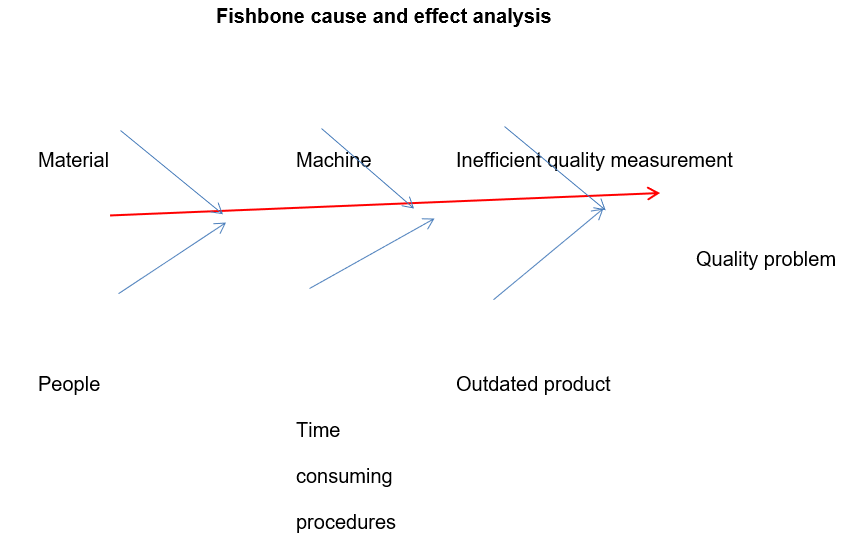
Use of flow charts
Organisations use flow charts in an effort to understand the various processes undertaken in the provision of products and services (Armstrong, 2006). Flow chart shows the various events and how they are interconnected. Flow charts aid organisations in identifying the most critical processes and those that are not necessary. In its operation, Torrent Pharmaceuticals Limited has incorporated the flow chart in its quality control. The firm has a fully equipped laboratory which ensures that its products are safe, effective, and pure. The firm only supplies its products after ensuring that they have adhered to the specifications. The firm’s quality control department undertakes a number of activities using flow charts which include raw material and packaging material analysis, finished products analysis, in-process checks and stability studies.
Flow chart showing Torrent Pharmaceuticals raw material and packaging material analysis
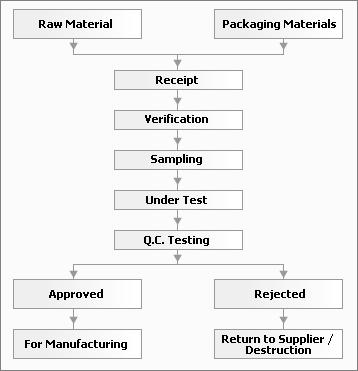
Flow chart showing finished products inspection
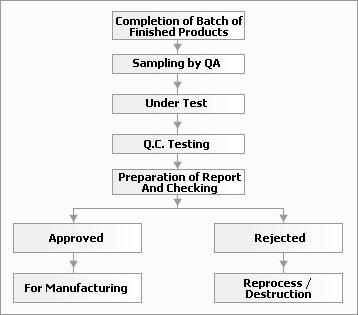
Flow chart showing Torrent Pharmaceuticals in-process analysis
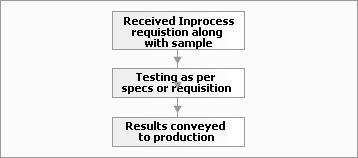
Another organisation which has integrated flow-chart in its quality control is Coca-Cola Limited. The firm uses a flow chart in an effort to ensure that quality is maintained within the entire production of its soft drinks.
Use of check sheet
This is a method that is used by private and public organisations in collecting data to be used in quality improvement. An organisation can use check sheet when evaluating a particular pattern for example defects in its products. Effective collection of data is critical in a firm’s effort to quality control processes. Using a check sheet, a firm is able to effectively identify the problem to be observed. For example, a large book store can use check sheet to evaluate the root cause of low sales than projected despite the large number of customers who patronize the book store. In order to achieve this, the firm’s management team may conduct a customer survey for 2 weeks in order to identify the problem. Customers may associate their failure to purchase from the store the poor services offered in the store. Some of the findings that the firm may identify include;
- Failure of bookstore’s staff to offer the required help.
- Failure of customers to find reading materials they were searching for.
- High prices
- Poor lighting within the store.
- Sought items not being carried in the store.
- No place to sit.
The check sheet below illustrates the frequency of occurrence during the two weeks.
After identifying the various causes, the organisation should develop a quality improvement strategy. The data collected can also be used in developing a histogram.
Information made available to customers and the importance of effective marketing
Quality control methods results into provision of a wide range of customer information. Some of the information relate to the organisation’s operation such as the firm’s location. This benefits the customers in accessing the products and services more efficiently (Charantimath, 2003, p.33).
In an effort to enhance its competitive advantage, Sony Corporation has integrated an effective communication mechanism with its customers. This has been attained by developing a website through which it provides customers with diverse product information and news. Through the website, the firm is able to inform customers on its software updates. Additionally, the firm frequently provides customers with simple information regarding its products and services (Sony Corporation, 2012).
In its Japan market, Sony Corporation guides its first-time personal computer customers with information on how to use the computer. This is achieved by monitoring the customer’s screen through the internet. The firm is also able to respond to questions which are frequently asked by the customers. Through provision of such product information, Sony is able to maintain a high level of customer service (Sony Corporation, 2012, para. 15). This also enhances the firm’s effectiveness in its quality control mechanisms.
In their quality control, organisations also incorporate information on new production technologies, infrastructure and other facilities that are aimed at improving the organisation’s operational efficiency. For example, incorporation of new technologies results into an organisation becoming cost-effective in its operation. The resultant effect is that the organisations are able to incorporate competitive pricing.
Additionally, provision of information on new product development and innovation plays a critical role in firm’s marketing effort (Ridley, 2008, p.52). This arises from the fact that customers develop a perception that they will generate more value by consuming the product. For example, in an effort to enhance its competitive advantage, Google Incorporation provided information on the new features it had integrated on its search engine. The new feature entailed incorporation of a new personal search feature, that is the ‘Search +’. The resultant effect is that the popularity of Google as a search engine has increased significantly.
In order to create value for their new product improvements, organisations are required to undertake effective marketing (Bolton, 1999, p. 33). This can only be achieved through formulation of effective marketing strategies. One of the issues that they should focus on relates to price. Considering the competitive nature of the business environment, effective pricing strategy should be formulated. The pricing strategy adopted is dependent on the quality of the product. If the product is of high quality, then there is a high probability of its price being high. This means that price is an important element in a firm’s marketing process. As a result of their effective design and quality of their shoe product, both Nike and Addidas have been able to avoid price wars. The resultant effect is that the two firms have been able to succeed in the long term (Article Base, 2009, para. 9). This arises from the fact that consumers are price conscious in their purchasing patterns.
Additionally, organisation’s promotion strategy should be well formulated. This arises from the fact that it plays a critical role in the consumer decision making process. One of the issues which the firm should focus when undertaking marketing communication relates to the quality of the firm’s products and services. The firm should continuously inform its customers on the improvements made on its products and services. This will contribute towards the customers acquiring information regarding the benefits that they will achieve upon purchasing the firm’s products and services. The resultant effect is that consumers are able to attach the firm’s products and services with value for money.
Benefit of user and non-user surveys in determining customer needs
In order to be effective in their quality control, it is paramount for organisations to conduct user and non-user surveys in an effort to establish customer needs. This arises from the fact that the surveys form the basis upon which firms undertake product innovation. According to Rosted (2005, p.19), Danish Companies within medical industry use customer surveys in undertaking innovation of their medical equipments. This arises from the fact that the surveys play a critical role in understanding the profile of the users. Understanding the users’ profile aids a firm in undertaking new product development or product improvement. This arises from the fact that an organisation is able to incorporate the users’ product requirements either stated or implied. User surveys are more effective in undertaking product development since the improvements made are more customers focused.
Conducting a survey on the users profile enhances an organisation’s knowledge on the customers’ consumption behaviour for example with reference to their preferences, likes and dislikes. As a result, firms’ management team are able to develop a comprehensive understanding of their customers’ level of satisfaction. Through the surveys, firms’ management teams gain sufficient intelligence on the changes in customer consumption behaviour.
User-surveys also contribute towards understanding the customers’ complaints and suggestions. The resultant effect is that a firm is able formulate quality improvement strategies so as to attain an optimal market position.
On the other hand, conducting a survey on non-users also aids an organisation in understanding the reasons why a particular customer category does not use the firm’s products or services. For example, an organisation is able to gain knowledge regarding the non-users perceptions and expectations regarding the firms’ products (Mukherjee, 2006, p.66). The information obtained is also critical in undertaking improvement in the products and services so as to attract the non-users. For example, an organisation can design a strategy to convert the non-users. Additionally, a firm is also able to understand the barriers to access and the necessary action required to eliminate the barriers.
Methods of consultation employed in six-sigma to encourage participation by under-represented groups
Use of questionnaires and surveys
There are different methods of consultation that are used in six-sigma in order to enhance participation by the various underrepresented groups (Schutta, 2006,p. 3). Some of these methods entail use of questionnaires and surveys. The questionnaires are distributed both internally and externally. Internal distribution occurs amongst the various organisational departments while external distribution is undertaken to the customers. This aids in acquiring information regarding the quality of the firm’s products or services (Brown, 1991, p. 23). Additionally, an organisation is able to make decision regarding the most appropriate way of designing its production.
Open forums, seminars and workshops
Consultation can also be undertaken by organising open forums, seminars and workshops with the under-represented groups. Through these seminars, the under-represented groups are able to make their opinion known. For example, in developing their quality schemes, organisations may organise open forums through which they should involve members of the public. Use of seminars and open forums will enhance the effectiveness with which the firms address the needs of the underrepresented groups.
Suggestion schemes
Organisations which have integrated six-sigma can also adopt suggestion schemes. Suggestion schemes motivate quality improvement internally. Organisations can incorporate suggestion schemes with their customer service initiatives (Pfeifer, 2002). Suggestion schemes contribute towards an organisation enhancing lateral thinking. This contributes towards organisation acquiring ideas necessary to improve the quality of their products. As a result, organisations are able to reduce wastage and improve their productivity.
Complaints procedures
Six-sigma is aimed at developing a quality culture. However, there are instances where organisations fail to deliver their quality promise to the customers. In order to correct the situation, organisations should develop a procedure which customers should follow in communicating their complaint. Complaint centres are of great value in organisations effort toward quality improvement and quality assurance. This arises from the fact that the information obtained from the customers forms the basis of quality improvement.
Stages of staff consultation necessary for effective implementation of a quality scheme
In order to undertake effective implementation of quality schemes, it is paramount for organisations to integrate effective staff consultation. This can be attained by integrating a number of stages. The first stage entails planning the consultation process. This should be attained by identifying the categories of staff to consult. Effective identification of the staff plays a critical role in ensuring that collect data is gathered.
The second stage entails the pre-consultation stage which entails ensuring that all the relevant stakeholders are involved in the formulation of the quality scheme. The third stage is entails formal notification of the intended consultation to the stakeholders. This step aids in seeking consent from the respondents. The fourth stage entails conduction of the formal consultation. In this stage, firms’ management team determine the most appropriate consultation method to adopt. The final stage is the feedback consultation which entails analyzing the information gathered from the respondents.
Conclusion
From the analysis, it is critical for organisations to incorporate the concept of quality control. This is due to the fact that quality control contributes towards an organisation attaining consistency in the quality of its products and services for a long duration. There are different methods of quality control that organisations can incorporate. It is also important for organisations to ensure that information is made available to customers. Some of the information may relate to the products price, benefits, and where to access the products. Organisations can achieve this by conducting a comprehensive market communication such as promotion.
Conducting surveys on both users and non-users is also critical in an organization’s quality control. There are also different methods of consultation that organisations can incorporate in their quality schemes. Examples of these methods include use of questionnaires, suggestion schemes and complaints procedures
Recommendations
In order to be effective in their quality control, organisations should consider the following recommendations.
- It is also paramount for organisations to undertake quality control continuously so as to ensure that its products are of high quality.
- Evaluate the best quality control method to adopt.
- To ensure high quality products and services, organisations should incorporate feed forward, concurrent and feedback control mechanisms.
- Both user and non-user surveys should also be conducted in order to improve quality.
Self-assessment in evaluating the health of an organization
The last decade has been characterized by an increment in the rate at which both private and public organizations are emphasizing on improving management. Rodriguez-Garcia and White (2005, p.3) asserts that organizations are shifting from the conventional methods of evaluating organization performance through conduction of external audits and incorporating the concept of internal audit. Internal audits are considered to be amongst the most effective strategies of evaluating organizations’ health (Antony & Preece, 2002, p.34). This arises from the fact that internal audits are result-based management approach. One of the internal auditing strategies that organizations can integrate is self-assessment.
Self-assessment entails a systematic, comprehensive and continuous evaluation of an organization’s results and activities which are compared against EFQM excellence model (The European Foundation for Quality Management, 2003, p.9). Below are the steps that organizations should integrate in order to ensure effective conduction of self-assessment.
- Develop a commitment to self-assesment.
- Preparation.
- Determine the scope of assessment.
- Establish a team.
- Introduce the assessment approach.
- Determination of the assessment checklist.
- Self-asessment by team members.
- Conduct a consensus meeting.
- Develop a report and action plan.
- Implementation of the action plan.
By conducting self-assessment organizations are able to identify their strengths and weaknesses. In an effort to attain operational efficiency, the management team of Dell Perot Systems conducts annual self-assessment in an effort to improve its quality management system. According to West and Cianfrani (2004, p.142), self-assessment enables firms’ management teams to determine whether the quality management systems integrated are effective.
Additionally, quality assessment is an important concept that management teams should consider integrating in an effort to improve the performance of their organization. By conducting self-assessment, firms’ management teams are able to identify gaps within organizations’ operation that need to be bridged. For example, in an effort to ensure that it satisfies the quality demands of its customers, Wal-Mart’s management team has incorporated a self-assessment strategy that is aimed at ensuring that it only procures from suppliers who adhere to high quality products. The firm evaluates its supplier selection criterion continuously in order to bridge possible gaps.
Self-assessment also acts as a performance appraisal strategy. As a result, self-assessment is increasingly being incorporated by organizations in the process of conducting performance reviews. As a result, organizations are able to enhance participatory management by incorporating the employees in the process. As a result, self-assessment is being considered as an effective monitoring and evaluation tool.
Additionally, self-assessment also contributes towards the effectiveness with which organizations improve their competitive advantage. This arises from the fact that firms are able to compare their performance against the set standards. For example, an organization can compare its products and services against the set quality criterion. Through this comparison, the organization will be able to determine its strengths and weaknesses on the basis of each criterion. As a result, the firm’s management can be able to formulate an action plan which will be used in undertaking improvement.
Through self-assessment, organizations are also able to monitor the results of the action plan formulated. This cycle is repeated continuously thus ensuring that the firm has effective performance. Therefore, self-assessment provides organizations with an opportunity to determine their operational efficiency. For example, Dell Perot Systems conducts annual self-assessment on its quality management system in an effort to identify opportunities for improvement by changing its quality management system. Some of the issues that the management team of Dell Perot System takes into consideration during the self-assessment process are outlined below.
- Product conformity.
- Customer feedback (Complaints and praise).
- Process performance.
- Results of audit.
- The preventative and corrective actions implemented.
- Follow-up on previous management reviews.
Additionally, Dell Perot System has also incorporated task-specific self-assessment. The firm has achieved this by ensuring that Program Managers periodically evaluate the progress of the programs which they are responsible for overseeing. The managers are required to ensure that there is no deviation from the performance requirements. As a result, Dell Perot System has been able to effectively prevent deviation from the desired quality outcome (Dell, 2012, para. 6). The chart below shows a self-assessment cycle that organizations can use.
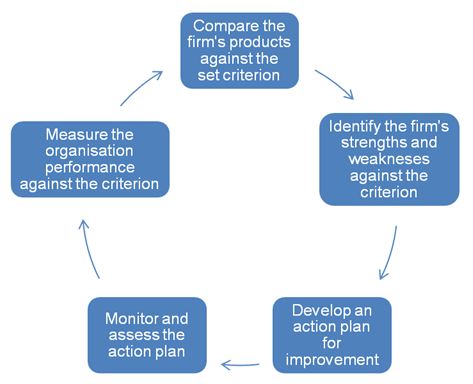
In case of any deviation from the set benchmark, firms’ management teams can be able to improve their level of accountability (Stecher, Kirby & Flora, 2004, p.30). Additionally, by undertaking self-assessment, organizations are able to remain focused to their goals and mission. The resultant effect is that the firms are able to attain their desired objective.
Conducting self-assessment contributes towards organizational learning. This arises from the fact that the organization is able to respond to changes in the external business environment. One of the environmental changes may relate to competition. Through self-assessment, organizations are able to compare their performance against that of the competitors. For example, in order to enhance its competitive edge within the information communication industry, Apple Incorporation may conduct a self-assessment on its operational efficiency. The management team of Apple Incorporation may compare the results of the self-assessment against its major competitors such as Research In Motion and Google Incorporation. Additionally, through such self-assessment, Apple Incorporation may be able to formulate an effective strategy that will address the challenges arising from the external business environment.
In summary, conducting self-assessment plays an important role in the operation of organizations. This arises from the fact that it provides the starting point for organizations to conduct total quality management. Additionally, self-assessment enables organizations to attain a high level of corporate accountability and performance improvement. Self-assessment does not only enable organizations to improve their operational processes but also their strategic and managerial processes. The resultant effect is that organizations attain their desired level of excellence.
Stages of staff consultation necessary for effective implementation of a quality scheme
In an effort to improve their performance, it is paramount for organizations to develop effective quality schemes. According to Freeman and Young (2012, p.4), quality schemes enhance service delivery within organizations. However, for quality schemes to be effective, it is imperative for organizations to integrate all the stakeholders. In order to achieve this, firms’ management team should conduct an effective consultation with the relevant stakeholders. Additionally, consultation is a challenging task to undertake due to its time consuming nature and the cost involved. Therefore, organizations should take into account the appropriate stages in order to engage all the stakeholders. The consultation process can be well illustrated in the following consultation process framework.
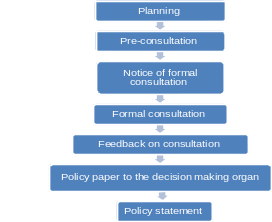
For the consultation process to be effective, organization should allocate sufficient time and resources to pre-consultation, informal consultation, notification of formal consultation and the formal consultation stages.
Pre-consultation
To ensure that there is effective and active involvement of all the stakeholders in the consultation process, it is critical for organizations to seek the opinions of the various stakeholders. This will aid in the identification of potential opportunities and barriers. In addition, the management team will collect the necessary information. For example, the consultation undertaken during the pre-consultation phase may entail evaluation of why the organization is reviewing its quality management system and the need for change. This stage should also entail identification of key issues that should be improved. By conducting a pre-consultation, organizations’ management teams are able to sound-out ideas and to assess potential issues.
Notice of formal consultation
Consultation is one of the ways through which firms’ management teams’ influence policy on different issues such as quality management. As a result, its importance to organizations has increased significantly. The resultant effect is that it places a burden to the involved stakeholders. In order to eliminate this pressure and enable the various business units to plan their involvement in the consultation process, it is imperative for firms’ management teams to ensure that all the parties are notified. Some of the mediums that organizations can use in making formal notification include press releases and organization website. Notifying the stakeholders of the intended consultation tends to increase the level of participation.
Formal consultation
This stage entails providing the stakeholders with written materials regarding the intended consultation process and other communication. This stage aids the management teams in the identification of the most appropriate approach to adopt. Additionally, the management team is able to know the needs of the stakeholders and to appreciate the multifaceted nature of the issue under consultation. For example with regard to quality scheme, the management team is able to understand the various strategies which can be integrated in order to improve quality of its products.
Feedback on consultation
To ensure effective implementation of the quality scheme, it is important to garner the opinion of the stakeholders. The information provided should be well recorded for analysis purposes. A follow-up on some of the opinions provided should be conducted. Additionally, the management team should ensure that all the opinions provided are fairly considered. After collecting the information, the organization should communicate it to the contributors. This will play an important role in identifying inaccuracies that need to be rectified. Upon publication of the final outcome of the consultation, management teams should provide an explanation to the stakeholders why some opinions were rejected.
Recommendations on modifications to existing systems that could improve service quality
In an effort to develop a high-competitive advantage in the business environment, organizations should increase their commitment towards ensuring provision of high quality and reliable products and services to their customers. In order to achieve this, organizations must reinforce their quality management systems.
One of the ways through which they can attain this is by reviewing their quality management systems with regard to all their operational processes. The review process should take into account the various processes ranging from product designing and development, manufacturing and marketing and sales services. Management teams of firms in different economic sectors such as Dell Perot Systems are increasingly reviewing their quality management systems in an effort to improve their performance. One of the ways through which they are achieving this is by reviewing the roles and responsibilities of those charged with the responsibility of ensuring that the products and services are of high quality.
Upon completion of the review, the management teams should formulate quality guidelines which should be followed in order to guarantee attainment of the desired level of quality. Additionally, organizations should effectively utilize customer feedback in an effort to improve the quality of their products. One of the ways through which they can attain this is by integrating Customer Information Centres in their quality management systems. The centre will be an effective source of business intelligence. For example, the information garnered through the centre can be used by the groups charged with the responsibility of planning and designing in order to improve quality. Customer feedback should be timely utilized in order to enhance product power. The chart below shows an example of how organizations can use customer feedback to improve their quality systems. This customer feedback mechanism has been integrated by Sony Corporation. Additionally, organizations can also integrate a quality hot line which will be used to collect product quality-related information from the employees. For example, through the hotline, employees will be able to communicate the quality difficulties that they may be experiencing in the workplace.
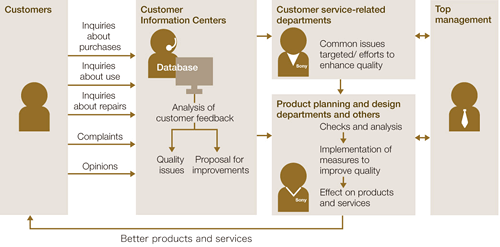
Reference List
Antony, J., & Preece, D., 2002. Understanding, managing and implementing quality: Frameworks, techniques and cases. New York: Routledge.
Armstrong, M., 2006. A handbook of management techniques. London; Kogan Page.
Article Base. 2009. Four points son Nike versus Adidas. Web.
Bolton, A. 1999. Quality management systems in the food industry; a guide to ISO 9001/2. Gaithersburg, MD: Aspen Publishers.
Brown, S., 1991. Service quality: multidisciplinary and multinational perspective. Lexington: Lexington Books.
Charantimath, E., 2003. Total quality management. New Delhi: Pearson Education India.
Dahlgaard, J., Kristensen, K. & Kanji, G., 2005. Fundamentals of total quality management: a process analysis and improvement. London: Routledge.
Dell. 2012. Quality assurance. Web.
Estrella, M., 2000. Learning from change: Issues and experiences in participatory monitoring and evaluation. London: Intermediate Technology Publication.
Freeman, J., & Young, J., 2012. Quality schemes. Web.
Kanji, G., 2002. Measuring business excellence. New York: Routledge.
Mukherjee, P., 2006. Total quality management. New Delhi: Prentice-Hall.
Pfeifer, T., 2002. Quality management. London: Hanser Verlag.
Ridley, J., 2008. Cutting edge internal auditing. Chichester, England: Wiley.
Rodriguez-Garcia, R., & White, E., 2005. Self-assessment in managing for results: Conducting self-assessment for development practitioners. Washington, DC: World Bank.
Rosted, J., 2005. User-driven innovation: Results and recommendations. Web.
Schutta, J., 2006. Business performance through lean six sigma; linking the knowledge worker, the twelve pillars and Baldrige. Milwaukee, Wisc.: ASQ Quality Press.
Stecher, B., Kirby, S., & Flora, W., 2004. Organizational improvement and accountability: Lessons for education from other sectors. Santa Monica: Rand.
The European Foundation for Quality Management. 2003. Introducing excellence: using the EFQM excellence model to improve performance. Web.
Thomas, A., Mason, L., & Ford, S., 2003. Care management in practice for registered manager award NVQ 4. Oxford: Heinemann Educational.
West, J., & Cianfrani, C., 2004. Unlike the power of your QMS: Keys to performance improvement. Milwaukee, Wisc.: ASQ Quality Press.